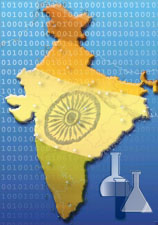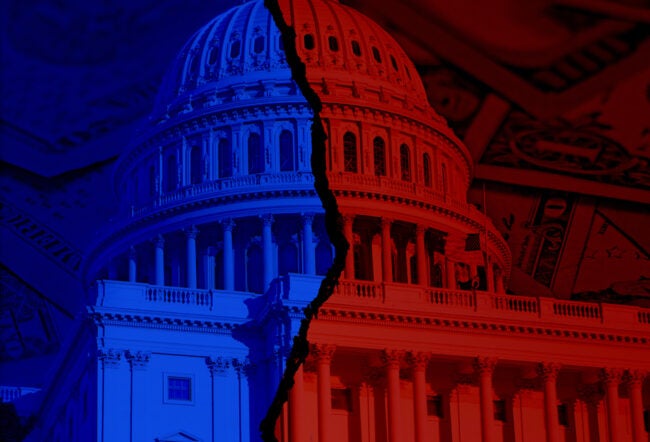When Dr. Reddy’s Laboratories (DRL), a leading Indian drug firm, entered into agreements in 1997 and 1998 with global pharmaceutical giant Novo Nordisk to license molecules for further development, many Indians reacted with a sense of pride. After all, Indian firms were often berated for being copycats and for reverse-engineering foreign drugs to be sold at bargain-basement prices in India and other developing countries, where patent laws are weak. DRL’s move was a great leap forward for the Indian pharmaceutical industry; what’s more, it was not an isolated incident. India’s largest pharmaceutical company, Ranbaxy, also licensed its technology for an innovative drug delivery system for ciprofloxacin, named Cipro-OD, to Germany’s Bayer, which owned the patent to the drug. (OD stands for once a day, which was Ranbaxy’s innovation.)
Unfortunately for DRL, Novo Nordisk decided to discontinue work on both molecules licensed from DRL some years later. This was a setback to DRL and to industry confidence, but the march to gain R&D skills in India’s pharmaceutical industry continues. DRL continues to do research on new molecules on its own and in collaboration with others, with about six of them currently in the pipeline. It is “de-risking” its research model though, as explained below.
Indian companies have long been criticized for their low level of investment in R&D, both in India and other parts of the world. This fact has prevented them from becoming serious players in global markets. Most companies spend a fraction of their sales, less than 1%, on R&D. As a result, India has often been viewed as a third-world country that stumbles along by copying western products, aided by lax patent policies.
Today, however, the scenario looks different, perhaps not vastly, but certainly noticeably. A few sectors like pharmaceuticals and automobiles are leading the charge in the R&D field, with expenditures rising disproportionately to sales growth. Numbers may not do full justice to the excitement around India’s R&D skills, but they are worth mentioning. Ranbaxy spent about 7% of its $1 billion sales during 2004 (calendar year) on R&D, while Dr. Reddy’s Laboratories spent 14% of its sales of $446 million in the fiscal year that ended last March. In DRL’s case, the number looks high in part because sales have dipped during the year, but even in absolute terms, the increase has been substantial.
Indian automobile companies still spend a relatively low amount on R&D as a percentage of sales. Most of their efforts are directed towards value engineering, or tweaking existing models to improve performance. Developing new models is expensive unless the company is global in scale and ambition. But, inspired by China’s global march, Indian firms are starting to realize that they should be setting their sights on this goal too.
As Rahul Bajaj, CEO of Bajaj Auto, noted in his company’s 2004-05 annual report, “I believe that sustained growth for our company in the next decade — if not in the next five years — will have to come from abroad.”
Overall, patents granted to India have been rising, an outcome of both Indian and foreign companies that have set up operations here. The latest data from the U.S. Patents office shows that in 2003, patents granted to innovators based in India increased by 37% to 341 from 249. World Intellectual Property Organization (WIPO) statistics show that India’s applications under the Patent Cooperation Treaty regime increased to 764 in 2003 compared with 525 in the previous year, but then declined to 689 in 2004.
Need to Be World Class
The drive to develop core R&D skills was, in large part, prompted by the threats and opportunities presented by globalization. There were other reasons too like improvements in product quality and processes, but the prime mover was the realization that having innovation capabilities leading to world class products was essential for companies to go global. Auto companies felt the threat from foreign models making inroads in the market, while pharmaceutical companies felt the heat from an impending product patent regime that would have left Indian companies far behind their foreign counterparts.
As Anji Reddy, chairman of DRL, puts it in a letter addressed to shareholders in the company’s latest annual report, “Excelling in the basic business operations will be necessary, but not sufficient. To maintain a long-term presence in the global pharmaceuticals markets and to grow profitably will require companies to be even more focused on R&D and creation of successful IPR’s [intellectual property rights].”
Automobile companies realized that foreign models will find ready takers in the Indian market, and falling import tariffs have been lowering the price barrier. Pawan Goenka, Mahindra & Mahindra’s COO and president designate, believes that the Indian auto industry has reached critical mass, and cannot depend on licensed technology for moving ahead.
The need to enter new product segments saw companies like Mahindra & Mahindra, Tata Motors and Bajaj Auto allocate higher expenditures to research and become more competitive. All these companies came out with new models that changed the face of their companies. Tata Motors which was a trucks, buses and multi-utility vehicles maker is now known as the company that makes the Indica and Indigo brand of cars. And, these models are now the biggest contributors to the company’s bottom line.
Pharmaceutical companies were the first to realize that in the long run, patents will matter and with pressure from the World Trade Organization (WTO) it was only a matter of when a product patents regime would be enforced, not if. Ranbaxy, Dr. Reddy’s Laboratories and Cipla were among the pioneers in R&D projects. The basic model was this: In the domestic market, generic versions of drugs under patent using different processes would be used to spearhead growth. In the global market, the U.S. generics market would be the first target with innovator drugs with sales of about $25 billion set to go off patent.
Two routes existed: One was to get “abbreviated new drug application” (ANDA) approvals (under the Waxman-Hatch amendments to the Federal Food Drug and Cosmetics Act, passed in the U.S. in 1984) for drugs that were about to go off patent and launch the drug soon after patent expiry. The other route — riskier and hence more profitable — was to file a challenge to the innovator’s patent. Then again, the products could be sold in the form of generic dosages that would be marketed by a third party with the requisite marketing infrastructure in developed markets or as branded dosages developing one’s own infrastructure.
The model was to use the funds generated from the US generics market to fund new chemical entities (NCE) research, which requires much higher outlays, even considering Indian cost advantages. Thus, while generic product launches will drive revenue growth in the near term, new molecules will provide big wins over the long run. Another model is to launch specialty drugs which are basically somewhere between new drug discoveries and generic drugs.
Talking about life post-2005, in an interview published earlier in the Economic Times, Malvinder Mohan Singh, president (pharmaceuticals) of Ranbaxy, said that his company would be at the top end as a global generics player. At the same time, there would be a lot of focus on R&D. Ranbaxy plans to have a strong generic base and will also create a proprietary base.
The target is essentially to move towards original drugs with a ‘discovered by an Indian company’ tag on them. And the opportunities are immense. Proof of that is the fact that most foreign majors like Pfizer and GlaxoSmithKline are expanding their R&D presence in India. Uday Saxena, chief scientific officer of DRL, says that the opportunities in the area of drug discovery are tremendous given the low cost of doing discovery and clinical development in India in direct contrast to rising R&D budgets in the U.S. Pipelines of newly discovered drugs in big pharma are dwindling and so the opportunities for smaller innovative companies are very much there. It is getting to be a level playing field, he said.
Indeed, the cost of doing R&D in India is a big advantage, along with others like scientific talent, patent protection, and a large patient pool-a high percentage of which has not been exposed to modern medicine (a perverse advantage of the state’s failure in providing basic healthcare). There are some estimates that suggest the cost of doing R&D in India can be as low as one-fifth that for discovering a new drug in a developed nation. The truth of this supposition will come when an Indian company (versus a foreign company doing R&D in India), brings a new drug to the market.
In the automobile market, most of the two-wheeler companies have obtained their basic R&D from their global partners — with whom they have or had technical collaboration — and then customized models for local customers. The other area in which R&D is put to use is to tweak existing models for better performance in critical areas like fuel efficiency or design. Basic research is not yet a priority in the manner it is for pharmaceutical companies. Also, automobile manufacture has traditionally revolved around buying technology and critical parts off the shelf, so a company does not have to do everything by itself to be R&D savvy. The basic platform is what the company has to focus on.
Two of the hottest models in India’s automobile market today are Mahindra & Mahindra’s Scorpio and Tata Motor’s Indica and both sport the Made in India badge. M&M’s share in the utility vehicle market is up to 33% from 26% in 2002, when the Scorpio was launched. Tata Motors has an 18% share of the passenger car market, up from 13% in 2002-and compared to 0% before it launched the Indica in 1998. These companies are keeping their R&D budgets up as the benefits have been visibly significant. Their sales and profits have grown by leaps and bounds and a good part of this can be attributed to these vehicles.
Tata Motors has a $1.36 billion or Rs. 6,000 crore [a crore, a traditional Indian measure of quantity, equals 10 million] capital expenditure program running from April 2004, and 15% of this is to be spent on improving its R&D capabilities, IT and other corporate investments. In fiscal 2005, Tata Motors’ expenditure on R&D was about 2.2% of sales at about $804 million (Rs. 350 crore), which is up substantially from about 1% of sales in the previous year.
The government has been doing its bit to push Indian industry towards spending a higher percentage of sales revenues on R&D, and now provides benefits in the form of a weighted tax deduction on the amount spent on R&D and also accelerated depreciation rates for equipment purchased for R&D purposes. The pharmaceutical industry was the first to lobby successfully for such benefits and the automobile industry too successfully lobbied for similar benefits. Pharmaceutical companies can deduct 150% of the amount spent on R&D from taxable income while automobile companies have been more recently permitted to deduct a similar amount.
Risks Coming to the Fore
Indian companies are just getting used to the risks of investing big money in research and development. Globally, big pharma is getting accustomed to a slowing flow of big breakthroughs from their R&D efforts in the past few years. But Indian pharmaceutical companies are just coming to terms with the fact that it will be an uphill task and that their initial successes, even if they were in generic patent challenges, are going to be difficult to sustain.
What makes it even tougher for companies like DRL and Ranbaxy is that when a huge percentage of sales goes into R&D, and returns are uncertain, investors too are inclined to play it safe. The past few years have seen Indian pharmaceutical companies suffering setbacks: On the U.S. generic market, they lost some patent challenge battles; and some new chemical entities that were licensed to global pharmaceutical majors did not make the grade. This exerts pressure on their market capitalization, as investors get cagey about staying on board when there is a bumpy ride ahead. Dr. Reddy’s market capitalization in July was down by 30% from its level three years ago, severely hit because the company was unlucky on quite a few fronts. Its larger counterpart Ranbaxy fared better, with a return of 8% in the same period. Yet, this pales when compared with how the stock markets fared during the period.
DRL has realized that the risks of its R&D efforts are coming to the fore, perhaps earlier and more ferociously than expected. That’s why it sealed an agreement with ICICI Venture for developing and selling products through the ANDA (abbreviated new drug application) route. The deal’s value is estimated at $56 million, and is structured such that up-front payments will be received by DRL for the development, registration and legal costs related to ANDAs filed in the U.S. in 2004-05 and 2005-06. When these products start generating revenue, ICICI Venture will get a royalty on sales for five years. The company is structuring similar models for its innovation activities. It is only a matter of time before other companies follow suit. Margins will not be as high now, as profits and risks will both be shared.
Brighter Future
A big success or two that can be attributed to a company’s R&D efforts does wonders for morale and rejuvenates the entire enterprise. When asked what R&D has done to change the vision of the company, this is what Saxena of DRL had to say: “The first thing that comes to my mind is the realization that through R&D and discovery of new drugs, the company has the power to address unmet medical needs and improve the lives and health of millions of people across the globe. There cannot be a better vision to be in R&D than this. Second, being a discovery-led company, such as Dr. Reddy’s, also establishes a culture of innovation and creativity that spreads across the company and makes a positive impact in every business of the company.”
At a time when most companies are faced with uncertainties in every sphere of their business, a strong R&D base gives them hope that they will overcome. These companies get a sizable portion of their sales from overseas markets, have established manufacturing centers, acquired companies or set up marketing infrastructure in Europe, the U.S., and Latin America, apart from other Asian countries. Some, like DRL, even have an R&D operation in America. If you look at DRL, Ranbaxy, M&M, Cipla and Tata Motors, not only has their financial performance improved, but their business outlook has been transformed. Much of that confidence can be attributed to that one blockbuster or two that rolled out of their R&D labs.



